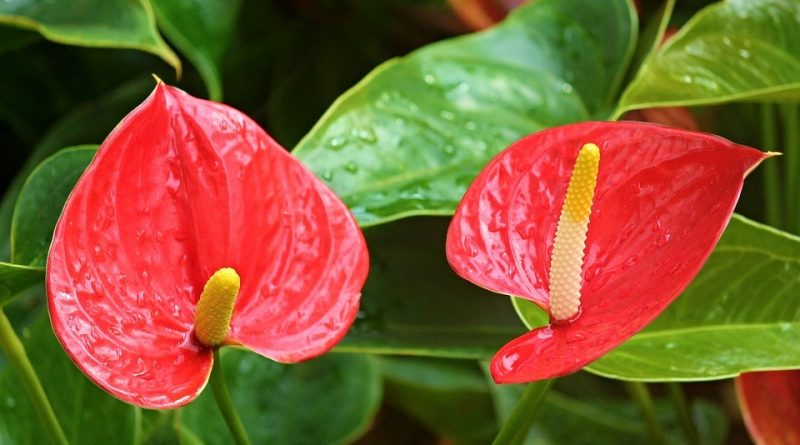How to grow the Anthurium
How to grow the Anthurium
Anthurium (Anthurium Schott, 1829) is a genus of herbaceous plants with decorative foliage of the Araceae family and native to tropical America.
For the cultivation of the Anthurium or Anthurium it must be taken into account that, being therefore a plant of tropical origin, it needs to have recreated, as much as possible, the soil and climatic conditions typical of the areas where it grows naturally. In this contribution we will therefore see how to cultivate the Anthurium with the appropriate techniques and useful expedients. However, it must be said that the cultivation of the Anthurium is not complicated on condition that it respects the water requirements and the correct type of substrate.
It is a plant that can grow perfectly in the apartment and in medium-sized pots. The substrate must be very rich in organic matter, mixed with 30% of coarse sand (possibly siliceous) and with a pH between 5 and 6; It is good to place a very large gravel on the bottom of the vessel to allow an efficient drainage as the plant needs frequent supplies of water. The plant should also be repotted on average every three years, in the spring, adding a mixture of peat and sphagnum (3: 1) and possibly with moss to cover the surface of the vessel to allow the maintenance of good humidity.
For a good health and aesthetic appearance of the Anthurium it is necessary to periodically clean the leaves and dry jets, taking care to clean the leaves with a cloth damped with deionized water and without using polishing oils.
To keep the plant more vigorous, it is advisable to irrigate regularly, positioning the pot directly on a saucer with expanded clay kept constantly wet. But be careful that the roots do not draw on this water. It will be the natural evaporation of the same to guarantee the necessary level of humidity that the plant needs.
In order to guarantee the formation of more vigorous and expanded leaves, in addition to the necessary level of humidity, a constant and regular fertilization must be provided.
Every two weeks, between April and September, a liquid fertilizer must be used to dilute directly in the water with which the plant will be watered. in the absence of experience in this field it is advisable to respect the doses contained in the packs; it is important, however, not to overload the plant with nitrogenous fertilizers which could weaken it and prepare it for attacks by mites, insects and fungi. The fertilizer must contain Nitrogen, Phosphorus and Potassium in an identical manner and have the other microelements such as iron or copper, which will give it a brighter green color.
Regarding the temperatures, we must consider that the optimal ones are 25 ° C in the summer and never below 15 ° C in the winter, avoiding sudden changes in temperature. For the exposure choose one in dim light but with diffused brightness, avoiding direct sunlight or full light. Among the most frequent parasites we remember the aphids and the floury cochineal that can be kept at bay, at the first appearance, with sprays of Marseille soap.

